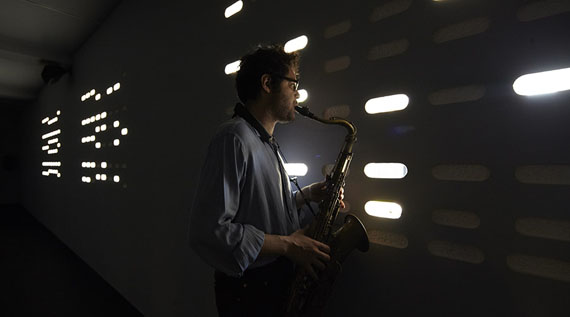
Anri Sala »
Ravel, Ravel, Unravel
Anri Sala Represents France at the Germany Pavilion
Exhibition: 1 Jun – 24 Nov 2013
Wed 29 May 15:00
Venice Biennale - FRANCE
Giardini
30124 Venezia
+39-41-2728397
The piece he is creating for the Biennale is titled Ravel Ravel Unravel, a subtle word play on the verb and the eponymous composer. In 1930, Maurice Ravel created a concerto to be played exclusively by the left hand, and it is upon this composition that the installation pivots. Two films focus separately upon the left hands of two renowned pianists – Louis Lortie and Jean-Efflam Bavouzet – who were invited by Sala to perform the piece. The films, played simultaneously, reveal the differences and discrepancies between the two interpretations of the music, as the temporal lapse becomes more marked. In adjacent rooms, two further films show a DJ mixing the two Ravel performances, becoming a further, unique interpretation of the piece. This, then, becomes the ‘unravel’ to the other films’ ‘ravel’.
This new work is a clear evolution and development of the ideas Sala and Macel explored when they worked together in 2012. As with the piece created for the Pompidou, the layering of sound in films produces ‘a ‘different’ space in an environment conceived to annihilate the feeling of space’ (Anri Sala). Whereas previously the films used to create this effect were pre-existing works, here the artist produced films specifically intended to be layered. This sees a further move towards Sala’s focus on formal display and the environment it is to be shown in. The history of the Germany Pavilion is somewhat contentious. Initially designed by Italian architect Daniele Donghi to house Bavarian art, the original 1909 structure was demolished and redesigned by the German Ernst Haiger in 1938, after instructions from the Nazi party to create something more modern. Sala’s work has previously explored the politics and narrative aligned with specific places, and the origins of the Germany pavilion have influenced many of the previous artists showing there for the Biennale. The press release from the Institut Français states that while Sala makes no explicit reference to the Pavilion within the work, he is nonetheless ‘interested in the specific resonances that it holds and what its history will give to his work.’�